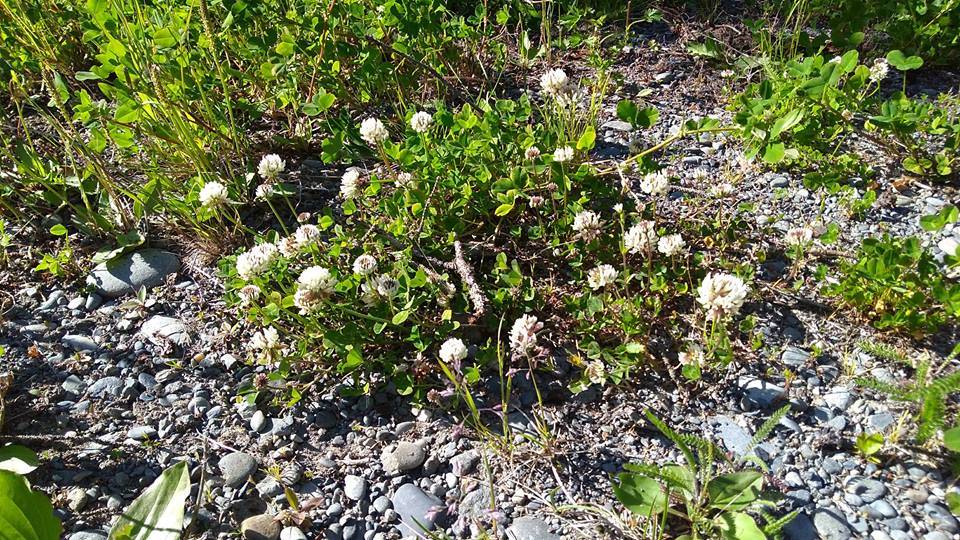That weed in the garden or the pretty flower along a strenuous hike may be more useful than meets the eye.
During her workshop at the Soldotna Public Library on July 6, Larissa Notter of Alaska Herbal Solutions detailed how different flowers, weeds, plants, berries and trees can be incorporated into daily life.
“It all started back in high school, when my stepmother’s mother passed and I was given a book called ‘Holistic Herbal’ by David Hoffman,” Notter said. “From there, I started using the herbs around the kitchen that were medicinal. I became so enamored.”
Hotter is currently in the process of becoming a Naturopathic doctor, a physician that combines the wisdom of nature with modern science, but cautions that all of her tips are informational only and that herbs are not approved by the U.S. Food and Drug Administration.
There are a wide array of ways to utilize the flora of Alaska, but below are 10 of the most commonly seen or most useful tips for utilizing Alaska wildlife.
1. Fireweed can be found growing throughout the Kenai Peninsula and provides an edible stalk and flowers, which can be eaten raw or cooked. According to Notter, the plant is also a good cure for constipation or as a salve for insect bites, when the root has been dried and turned to powder.
2. “You can smell it before you see it,” Notter said of the mint plant. The mint smell has proved useful for headache relief. The plant can be used as tea leaves or in salads and aids in digestion.
“I like to drink mint tea at restaurants before eating,” Notter said.
3. Clovers come in many colors, and sometimes with an extra, lucky leaf, but mostly white and red clovers are found in Alaska. They can be eaten raw, in salads, or in tea.
“White clovers are good for viral colds,” Notter said. Red clovers can be blood cleansing and purifier when drank as a tea.
And all types of clovers make a tasty addition when home brewing mead, Notter said, or a nice trail snack.
4. Dandelions are a versatile weed. Any part of the dandelion can be consumed and the milky sap found inside dandelions is a great option for treating plantar warts, according to Notter. Just place the liquid on the wart and cover.
5. The birch tree is a great source of sap, but making syrup is a daunting task Notter said.
“The ratio is high, with 80 to 100 gallons of sap making one gallon of syrup,” she said. “I store the sap as ice cubes and use it in my drinks. The sap is great remedy for a sore throat.”
The bark of the birch tree and the catkins, which are the small, flowering clusters found on the trees, can be eaten, although it may be best saved for emergency situations.
6. Chickweed is a great addition to salads and is especially good for those on a diet.
“It can be used in a tea for weight loss due to the low calories and high vitamins,” Notter said. “Chickweed has a lot of vitamins.”
7. Stinging nettles usually do more harm than good, but the plant does have several uses. For those with rheumatism and arthritis, despite the infamous stinging, picking the plant can help combat pain in the hands.
The plant is also edible, if prepared correctly and is a great source of iron.
“Dried or lightly steamed makes it lose the stinging aspect,” Notter said. “Then you can use it in food. I like it in soup.”
8. The valerian plant is helpful in a tea as relief for stomach and muscle cramps. It can also help calm nerves and induce sleep, but it can also help entertain feline companion if the pantry runs dry of catnip.
“One of my cats doesn’t like catnip, but goes crazy over dried valerian root,” Notter said.
9. Blueberries can add a nice sweet flavor to any smoothie or make a great jar of jam and in any form offer a good amount of fiber which Notter said is good for the digestive system.
“You can also make a gargle decoction of leaf and bark for sore throat,” Notter said. “And if you drink it, it’s good for treating diarrhea.”
10. Rose hips, found on rose plants, are high in vitamin C and make a great tea for coughs and colds, according to Notter.
“It’s best after the first frost,” Notter said. “But if you want to have them sooner, you can harvest and put them in a freezer over night and it will do the same thing.”
Notter recommends having either a phone or identification book when harvesting to be able to identify plants. She especially recommends having a way to identify the herb’s scientific name.
“Some plants have many different common names,” Notter said. “So it can be difficult to look something up using only that, and many plants have different subspecies which don’t have the same uses so having the scientific name is super useful.”
Notter plans more lessons at the library, but for more information visit alaskaherbalsolutions.com
Reach Kat Sorensen at kat.sorensen@peninsulaclarion.com.

